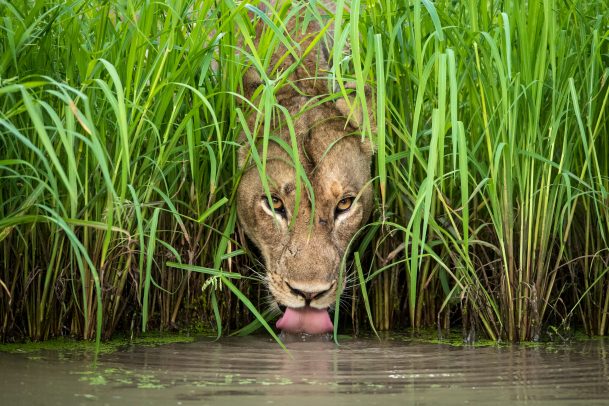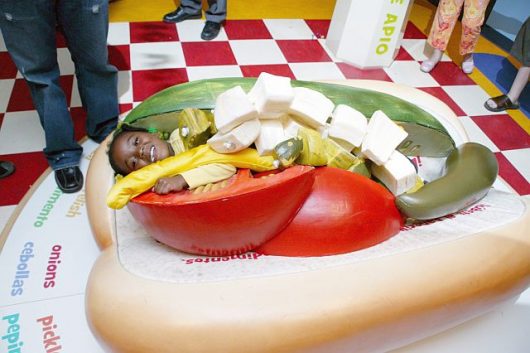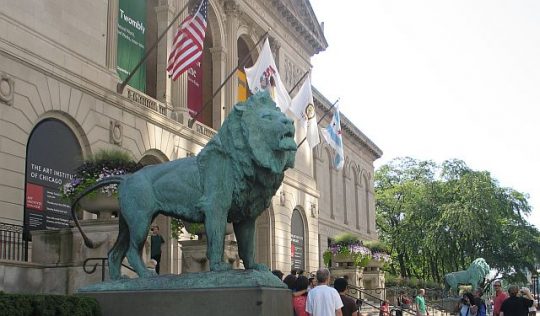
We often put a place on the “some day” go-to list. But with school’s Spring Vacation days to fill, that chance is now.
The four places suggested here have something new to see or have something that is fun in addition to their regular attractions.
You probably know the museum has more than 1,000 butterflies flitting around its Judy Istock Butterfly Haven. But it also has an indoor tree house and visitors can roam from tree to tree to see what lives in a forest canopy.

However, Spring Break is also a great time to visit because the “Thomas D. Mangelsen-A Life in the Wild” photography exhibit is there. The exhibit includes his famous photo of a bear catching a fish. Photography buffs will also want to catch Mangelsen’s lecture and book signing of “The Last Great Wild Places,” March 19 at 2 p.m. and again at 6:30 p.m. (reservations needed).
The Peggy Notebaert Nature Museum is at 2430 N. Cannon Dr., Chicago. Hours: Mon-Fri 9 a.m.-5p.m., Sat-Sun 10 a,m,-5 p.m. For more information call (773) 755-510 and visit Nature Museum.

Youngsters can see, feel, hear and smell bits of the city’s history in ‘Sensing Chicago,” They will get their own toolkit to go around the exhibit where they can ID a Chicago item such as chocolate or the Great Chicago Fire, by its smell and sit in a stadium seat to activate a baseball clip. They can pretend to fly over the city or pretend to be a Chicago-style hot dog.
However, an exhibit coming April 8, 2019, “Silver Screen to Mainstream: American Fashion in the 1930s and ‘40s,” will look at Hollywood’s glamour influence on American styles after 1929 on catalogues, home-made clothes, man-made materials and the use of the newly invented zipper.
The Chicago History Museum is at 1601 N. Clark St.,Chicago. Hours: Mon. 9:30 a.m.-4:30 p.m., Tues. 9:30 a.m.-9 p.m., Wed.-Sat. 9:30a.m.-4:30 p.m., Sun. noon-5 p.m. For more information call (312) 642-4600 and visit Chicago History.

Go upstairs in the Field to see where SUE now resides among other interesting, ancient skeletons and fossils. SUE, who used to be in the Great Hall on the main floor, is a 40-foot-long and 90-percent-complete Tyrannosaurus rex.
And go what feels like descending into an Egyptian tomb. It is replica of a mastaba that has two chamber rooms from the burial site of 5th Dynasty Egyptian Pharaoh Unis’s son Unis-Ankh, dating to 2400 BC. See one of the largest collections of mummies in the United States.
However, a fascinating new exhibit, “Wildlife Photographer of the Year,” features the winners from several years. (See Isak Pretorius photo at top) They bring visitors up close and personal to wild animals and other amazing nature pictures. The exhibit opens March 22,2019.
(Ed Note: Exhibitions Project Manager Janet Hong pointed out something that is also true of the Mangelsen exhibit at the Peggy Notebaert Museum. “Sometimes, the animal in the photo is the protagonist —you identify with that animal and its story. But the hero of a photograph can also be its photographer,” Hong said. “It takes perseverance to get a great shot. Understanding an animal’s behavior can mean tracking it for days and a great visual composition often comes from deep knowledge of a place or plant or animal.”)
The Field Museum is at 1400 S.Lake Shore Dr. on Chicago’s Museum Campus. Hours: 9 a.m,.-5 p.m. daily For more information call (312) 922-9410 and visit Field Museum.

Visit paintings that are old friends and wander to make new friends. Go down to the Thorne Miniature Rooms to see 68 European and American interiors. Visit the Artist’s Studio to see what family programs are taking place.
However, “Rembrandt Portraits,” opened March 8, goes through June 9, 2019 in Gallery 213. It’s an interesting analysis of what went into doing a portrait.
The Art Institute of Chicago is at 111 S. Michigan Ave., Chicago. Hours: 10:30 a.m.-5 p.m., and open until 8 p.m. Thursday. For more information call (312) 443-3600 and visit ARTIC.
